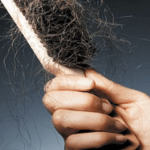Many women experience changes in their vaginal tone and firmness at some point in life – whether due to childbirth, aging, hormonal fluctuations, or menopause.
While these changes are natural, they can affect not just physical sensation during intimacy but also self-confidence and emotional well-being.
The good news? Today, there are a wide range of safe, effective vaginal tightening solutions – from at-home remedies and exercises to professional treatments – all designed to help women feel more confident, comfortable, and connected.
Also Read
Let’s explore what causes vaginal laxity, what signs to look for, and the best non-surgical and medical options available today.
What Is Vaginal Laxity?
Vaginal laxity refers to a loss of tightness or firmness in the vaginal canal. It’s a common condition, yet often under-discussed due to stigma or embarrassment.
Common Causes:
- Childbirth: Vaginal delivery stretches tissues and muscles.
- Aging and menopause: Lower estrogen levels affect tissue elasticity.
- Frequent or high-impact exercise: Can weaken the pelvic floor if not properly supported.
- Hormonal changes: Particularly during perimenopause and menopause.
- Chronic constipation or heavy lifting: May contribute to muscle strain and pelvic floor weakness.
It’s important to remember: this is not a flaw or failure, but a natural part of how bodies evolve.
Symptoms and Signs of Vaginal Laxity
- Reduced sensation during intercourse
- Difficulty achieving orgasm
- Feeling of “looseness” internally
- Vaginal dryness or discomfort
- Lower confidence in intimate situations
- Mild urinary leakage when laughing or sneezing (a sign of pelvic floor weakness)
Non-Surgical Vaginal Tightening Solutions
These are popular choices for women who want to enhance tone and comfort naturally, without downtime or medical procedures.
1. Pelvic Floor Exercises (Kegels)
Kegels are the gold standard for strengthening the vaginal and pelvic floor muscles. When practiced consistently, they can:
- Improve bladder control
- Enhance sexual satisfaction
- Tighten and tone the vaginal muscles
How to do them: Contract your pelvic muscles (like you’re stopping urine), hold for 3–5 seconds, and release. Do 3 sets of 10 reps daily.
2. Vaginal Tightening Creams and Gels
Made with natural astringent herbs like manjakani, witch hazel, aloe vera, and pueraria mirifica, these topical products:
- Offer temporary firming effects
- Boost lubrication
- Improve blood circulation in the vaginal area
Some can be applied daily, while others are designed for use just before intimacy.
Pro Tip: Always choose clinically tested products and avoid those with harsh chemicals or artificial fragrances.
3. Yoni Steaming and Herbal Remedies
Used in traditional practices, vaginal steaming (yoni steam) involves sitting over warm herbal-infused steam to help tone tissues and support healing post-childbirth.
While anecdotal evidence is strong, scientific studies are limited. Always consult your doctor before trying new treatments, especially during pregnancy or postpartum.
Medical and In-Clinic Vaginal Tightening Treatments
For longer-term or more dramatic results, many women turn to non-invasive or minimally invasive medical procedures.
1. Laser Vaginal Rejuvenation (e.g., CO₂ Laser)
This non-surgical treatment uses controlled laser energy to stimulate collagen production, improve elasticity, and rejuvenate vaginal tissues.
- No anesthesia required
- Takes 20–30 minutes
- Minimal to no downtime
- Often recommended in a series of 2–3 sessions
2. Radiofrequency (RF) Treatments (e.g., ThermiVa, Viveve)
These devices use gentle heat to stimulate collagen and tighten the vaginal canal over time.
- Improves vaginal laxity and sensitivity
- Can reduce mild urinary incontinence
- Often described as painless and relaxing
3. Vaginal Rejuvenation Surgery (Vaginoplasty)
For women seeking more permanent or structural tightening, a vaginoplasty involves surgically tightening the muscles and removing excess vaginal lining.
- Requires anesthesia
- Longer recovery period (4–6 weeks)
- Typically reserved for significant laxity after multiple births
Lifestyle Tips to Support Vaginal Health
- Stay hydrated and eat foods rich in collagen (bone broth, leafy greens, citrus fruits)
- Avoid harsh soaps or douches that disrupt natural flora
- Use intimate moisturizers or vaginal estrogen (if prescribed) to combat dryness
- Practice core and pelvic-strengthening workouts, like Pilates or yoga
Emotional and Intimate Wellness
Remember, vaginal tightness isn’t just about the physical aspect – it’s also about how you feel in your body and in your relationship.
What matters most:
- Open communication with your partner
- Confidence in your sexuality
- Prioritizing self-care and wellness
- Addressing any pain, shame, or discomfort with professional support
When to Talk to a Doctor
If you’re experiencing:
- Persistent discomfort or dryness
- Trouble with sexual intimacy
- Signs of pelvic organ prolapse
- Postpartum complications
Then it’s time to reach out to a gynecologist or pelvic floor specialist. You deserve care that supports your overall well-being – physically and emotionally.
Whether you’re a new mom, navigating menopause, or simply noticing changes in your body – know that you’re not alone. Vaginal laxity is common, treatable, and nothing to feel embarrassed about.
With a wide range of safe, effective vaginal tightening solutions, you can take control of your comfort, rediscover intimacy, and feel confident in your body again.














